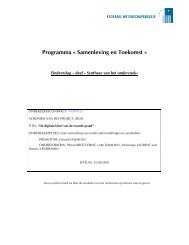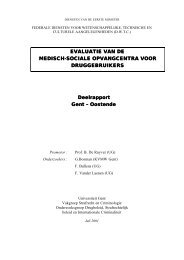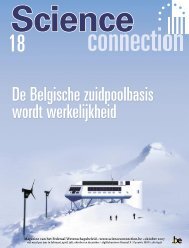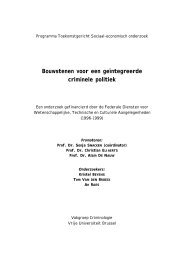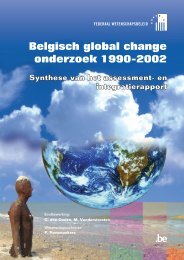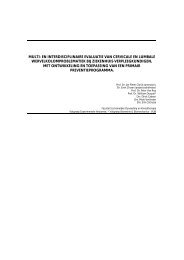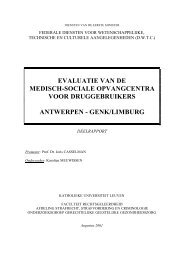chapter 3 inventory of local food systems
chapter 3 inventory of local food systems
chapter 3 inventory of local food systems
Create successful ePaper yourself
Turn your PDF publications into a flip-book with our unique Google optimized e-Paper software.
Project CP/59 - “Instruments and institutions to develop <strong>local</strong> <strong>food</strong> <strong>systems</strong>”<br />
A price comparison is an easy indicator to involve in a general comparison <strong>of</strong> different<br />
<strong>systems</strong>. Special attention should be addressed to the products compared, since different<br />
<strong>systems</strong> might work with different breeds or strains at one hand, and with different<br />
production methods, causing different production scales, a.o. When all those aspects are<br />
carefully dealt with during measurements at one hand, and explained when the results<br />
are published at the other hand, this indicator is a fairly simple and useful tool in both<br />
measurement and communication.<br />
2.4. Social indicators<br />
A social sustainable community is said to have the ability to maintain and build on its<br />
own resources and have the resilience to prevent and/or address problems in the future<br />
(Gates and Lee, 2005). Within this scope, social capital is defined as the possibility <strong>of</strong> an<br />
individual to mobilise resources from social networks in which he takes part (Komter et<br />
al., 2000), and it is seen as a production mean, fed by social relationships within a<br />
community or a group, to be used by individual members (Dessein et al., 2004). There<br />
is the need to assess how <strong>local</strong> ecologies and social relationships are or become<br />
implicated in existing or emerging production <strong>systems</strong> and whether stakeholders in<br />
different <strong>food</strong> <strong>systems</strong> have access to social capital in a different way. Research<br />
questions are:<br />
• Are farmers differently embedded in (parts <strong>of</strong>) society depending on the <strong>food</strong><br />
system they choose? (= networking), and what does this imply?<br />
• Do farmers have different access to resources to be found in networks? (= social<br />
capital)<br />
• Do farmers experience satisfaction in their work and do they feel appreciation for<br />
their knowledge and skills? (= job satisfaction)<br />
Social sustainability was addressed in its aspects where producers are involved. Within<br />
the MFS, data gathering on consumer level would have implied a totally different<br />
research design which was impossible within the scope <strong>of</strong> our research. Since for the<br />
economical and ecological indicators, we decided upon a case study approach on<br />
producer level, also the information for the social indicators was collected in this way.<br />
As primary producers, farmers remain key persons in the importance <strong>of</strong> <strong>food</strong> markets<br />
described to rural society (e.g., Moehler, 1996; Marsden et al., 2000), this is another<br />
motivation to focus on the aspects where farmers are involved is also motivated in this<br />
scope.<br />
2.4.1. Social indicator I: networking<br />
Since social capital results from the social networks in which an individual takes part, it<br />
is interesting as a start to describe the networks an individual takes part in. The social<br />
networks farmers are involved in can be called upon threefold. At one side farmers<br />
function in relation to their colleague-farmers. Furthermore, farmers sell their produce,<br />
resulting in more or less networking to middlemen, consumers and others. A third<br />
SPSD II - Part I - Sustainable production and consumption patterns - Agro-Food 33



